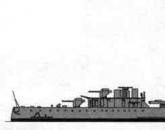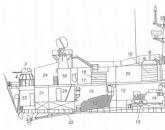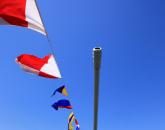Toshiba conditioners: the world standard of climatic technics. Toshiba: Japanese Engineering Genius Founding of Tanaka Seizo-sho
Gadget manufacturers
Toshiba is a Japanese multinational conglomerate with a long history of development. It was formed by the merger of two enterprises formed in the 19th century. The company's founding year is 1939, when Shibaura Seisaku-sho merged with Tokyo Denki, firms that were established in 1875 and 1890, respectively. In 1978, the company's name was changed to the current name of Toshiba Corporation. Its entire history was marked by numerous corporate takeovers.By 2010, Toshiba had become the 5th largest PC vendor in the world by revenue. In the same year, the firm was also ranked 4th in semiconductor production. Today it is listed on the Tokyo Stock Exchange.
As already mentioned, the company in the form in which we know it today appeared after the merger of two enterprises into one. Shibaura Seisaku-sho was founded in 1875. Its creator was Tanaka Hisashige, an inventor and engineer. It was his company that was the first in Japan to start producing telegraph equipment. In 1893 it was declared insolvent and bought out by the bank.
1910 was marked by an alliance with GE USA. At the same time, the bet was made on both Shibaura Seisaku-sho and Tokyo Denki. Both firms had an additional product line and also produced heavy electrical equipment. They were merged in 1939. Cooperation with GE continued until the outbreak of war, and resumed as early as 1953.
Tanaka Hisashige was born in Kurumen, Chikugo (now Fukuoka Prefecture) as the eldest son of a tortoise shell craftsman. Being very young, he showed himself as a gifted artisan - apparently, his father's genes affected. At the age of fourteen, Tanaka invented the loom, and by the age of twenty he began working on mechanical karakuri dolls powered by hydraulics. These dolls could even perform quite complex movements, and therefore were in demand by aristocrats and wealthy landowners. At twenty-one, Tanaka spoke to the public and demonstrated the clockwork doll he had created.
In 1834, the inventor moved to Osaka, where he experimented with pneumatics, hydraulics, and lighting equipment. He soon began studying rangaku and astronomy in Kyoto. In 1851, he built the Myriad annual clock, which today is the most important cultural asset of the Japanese government. However, the atmosphere in Kyoto soon became not too favorable for foreign influence and technology, and Tanaka was invited to the Saga domain on the island of Kyushu, where he was warmly welcomed by the Nabeshima Naomasa family. There, the engineer designed and built the first domestically produced steam locomotive in Japan, as well as a steam warship. Despite his lack of previous experience in the field, he had a useful Dutch manual and watched the demonstration steam engine arranged by the Russian diplomat E. Putyatin during his visit to Nagasaki in 1853.
Tanaka was also involved in building the reverberatory furnace in Saga. In 1864, he returned to his native Kurume domain, where he helped develop modern weapons at that time.

In 1873, Tanaka (who was 74 years old at the time and still full of energy) was invited to Tokyo to make telegraphs in a small ministry factory. After his death in 1881, his son founded an engineering company. After a merger with another firm in 1939, the company now known as Toshiba was founded.
During the first decades of the 20th century, the Shibaura Seisaku-sho became one of the largest heavy electrical machines, while Japan was rapidly accumulating the world's industrial capacity. Tokyo Denki was founded in 1890 and became the first manufacturer of electric incandescent lamps in the country. Its merger with Shibaura Seisaku-sho led to the creation of a joint venture, which already then received the nickname "Toshiba Company". Be that as it may, the official name appeared only in 1978.
Through a combination of organic growth and new acquisitions, the group expanded rapidly. In the 1940s and 1950s, the company acquired several industrial firms. Between the 60s and 90s, she opened subsidiaries that were involved in the music industry, electrical engineering, lighting production, chemical industry, Information Systems and so on.
It was Toshiba who invented a number of Japanese innovations, including the radar in 1912, the TAC digital computer in 1954, the transistor television and microwave oven in 1959, the color video telephone in 1971, the Japanese word processor in 1978, the DVD in 1995, and so on.
1987 was marked by an unpleasant incident: one of Toshiba's subsidiaries was accused of illegally selling milling machines that were used Soviet Union to create silent underwater propellers (in violation of CoCom's international embargo agreement for some countries). In addition to the subsidiary, the Norwegians Kongsberg Vaapenfabrikk were involved in the scandal. The incident created tensions between Japan and the US, and led to the arrest and subsequent execution of two senior executives, as well as the imposition of sanctions by both countries on the company.
Senator John Heinz said the following about the scandal:
"What Toshiba and Kongsberg did was a $517 million security ransom for the United States."
In 2001, a contract was signed with Orion Electric, enabling the company to manufacture and source finished consumer TV and video products to meet growing market demand. North America. This agreement expired in 2008.
In the spring of 2010, Toshiba agreed to acquire IBM's POS business for $860 million, making it the world's largest point-of-sale systems provider.
In the summer of 2012, the firm was accused of fixing high prices on liquid crystal panels in the United States. Despite the fact that Toshiba denied everything, they still agreed to a settlement of the issue along with several other manufacturers on total amount$571 million In early spring 2014, Toshiba sued SK Hynix for stealing NAND flash technology.

Today, the firm's products and services include information technology, telecommunications equipment and systems, power plants, electronic components and materials, consumer electronics, industrial and social infrastructure systems, household appliances, office equipment, medical equipment, lighting and logistics. The company is headquartered in Tokyo and operates worldwide.
Clearly, Toshiba offers the widest range of products and services. The range includes air conditioners, home appliances and electronics, control systems (including security systems, traffic or air traffic control systems, railway systems), electrical equipment, elevators and escalators. It can also be attributed home appliances(refrigerators, washing machines), IT services, lighting, office equipment, personal computers, semiconductors, power systems and so on.
In October 2010, the company introduced the Regza GL1 backlit LCD 3D TV. This TV could be used with or without 3D glasses.
In February 2008, Toshiba announced that they were phasing out the HD DVD format, which effectively "lost the war" in favor of Blu-ray. Since the end of March of the same year, the company continued to support retailers and provide technical support one million owners of HD DVD players and recorders worldwide. In addition, Toshiba announced new line standalone Blu-ray players and laptops.
One of famous brands, owned by the company, is called REGZA. Televisions are produced under this brand. This name was phased out in 2010 for the North American market. Name today trademark used for Android smartphones developed by Fujitsu.
At the end of 2013, Toshiba entered the German solar energy business by installing photovoltaic systems in residential buildings.

In 2014, the company announced the release of a new processor, which was intended for various electronic devices. It was a chip with advanced processing capabilities for graphic and sound information. The processor could have a clock frequency of 300 to 600 megahertz.
The parameters of the model were 16 by 16 millimeters. The chip configuration included a liquid crystal display controller with a certain resolution, a graphics core, and so on. The developers themselves noted that this professor is able to provide high speed work with a graphic and sound signal, as well as provide reliable protection. In addition, the chip is suitable for a wide variety of electronics, including mobile devices, industrial equipment, and so on. Mass production of such chips should begin in 2015.
In October 2014, the company launched its second Chrome OS laptop, also known as the Chromebook 2. The new version featured a thinner profile and a much improved display. Powered by Chrome, its users have open access to Google Drive storage and a collection of apps and extensions in the Chrome Web Store.
The company has been repeatedly condemned for "weak" efforts in the area of environmental impact reduction. In November 2012, it was ranked second from bottom in the 18th edition of the Greenpeace Guide to Green Electronics. Toshiba received 2.3% (out of a possible 10%). In the categories "Energy Policy Advocacy", "Use of Recycled Plastic in Products", and "Sustainable Fiber Sources for Paper Policies and Practices", the company was rated "0".
In 2010, Toshiba announced that all of its new LCD TVs are Energy Star compliant, with 34 models meeting or exceeding the minimum requirements by 30 percent or more.
In 2008, the company cooperated with Tsinghua University in China to develop scientific and research center, which would help her focus on saving energy and maintaining environment.

Thus, the Toshiba Energy and Environment Research Center was born in Beijing, where forty university students gathered to research electrical equipment and work on new technologies that could stop the process of global warming. Through this partnership, the company hopes to promote products that can better protect the environment and "save China."
In fact, cooperation between Tsinghua University and Toshiba began as early as October 2007, when they signed an agreement on joint energy and environmental research. Their projects are designed to reduce vehicle pollution and create systems that do not have a negative impact on the environment.
Back in December 70s, Toshiba began construction of the third unit of the Fukushima nuclear power plant. In March 2011, it was damaged due to nuclear accidents.
Toshiba is organized into four business groups. The first of these divisions deals with digital products, the second with electronic devices, the third with household appliances, and the fourth with social infrastructure.
During the year (to March 2012), the company managed to generate a total income of over 6 billion yen (of which the social infrastructure group brought the most profit, and the least - Home Appliances). In the same year, 45% of Toshiba's sales came from Japan, and the remaining 55% from all over the world.
The company has over thirty research and development centers, where about 4.18 thousand employees work. In total, the company has invested more than 319 million yen in these centers annually. In general, in 2011, over 2.4 thousand Toshiba patents were registered in the US (that is, in fact, the company was in 5th place according to this criterion).
About the brand
Corporation TOSHIBA was founded in the city of Edo (the old name of Tokyo) in 1875 and became Japan's first manufacturer of telegraph equipment. Initially, the corporation was called Tanaka Engineering Works. The founder of the company, Mr. Hisashige Tanaka - (Tanaka Hisashige) is a well-known researcher and inventor. In 1904, Tanaka Engineering Works changed its name to Shibaura Engineering Works and became the largest manufacturer of powerful electrical equipment. In parallel with the Tanaka Engineering Works, another electrical machine company, Hakunetsu-sha, was founded in 1890 and became the first company in Japan to start manufacturing incandescent lamps.
In 1899, it changed its name to Tokyo Electric Co. Following the requirements of the market, the main direction of its activity the company has made the production of equipment for the end user. In 1939, these two companies, leaders in their fields of activity, merged under the common name of Tokyo Shibaura Electric Co., as a single manufacturer electrical equipment. After a long process of mergers and transformations, in 1978 the company acquired its current name TOSHIBA, an abbreviation obtained by merging the first characters in the words Tokyo and Shibaura.
1957 TOSHIBA enters the air conditioner market. In 1961, he created the world's first split system, and in 1969 he released the first portable air conditioners. 1977 - TOSHIBA is the first to produce air conditioners with electronic control, and in 1981 invents inverter technology. For more than a century of history, the company has become a transnational corporation and has become one of the world's largest manufacturers of electronics, electrical engineering and climatic equipment. In 2000, the company's total sales amounted to $53 billion. More than 198,000 people are employed in the company's offices and factories around the world. According to Fortune magazine, TOSHIBA ranks 44th on the list largest companies peace. Currently, there are more than 100 of its offices and subsidiaries outside of Japan. They employ more than 40,000 employees involved in the development, production and sales of a wide variety of products.
Today TOSHIBA is a group of ten companies, each of which specializes in one of the lines of business. As a major electronics manufacturer, the company also pays great attention to environmental responsibility. A plan has been developed and is being implemented to reduce the impact of production on natural objects, including the constant reduction of emissions carbon dioxide and transition to CFC-free technologies. True to its motto "In Touch With Tomorrow", TOSHIBA entered the 21st century armed with the latest information technology and following the rules of doing business in the new conditions of the information age.
Toshiba's excellence in technology development, product and system manufacturing and service delivery, as well as the quality and reliability that users recognize and respect, are the result of Toshiba's commitment to ideas innovative development and progress.
Information about the brand "TOSHIBA" is taken from public sources.
, , ,
Toshiba Today, many are familiar firsthand, because over the course of for long years it remained the undisputed favorite in the production of office and consumer electronics. It is she who owns one of the largest and most influential research centers in Japan, which provides the company's products. innovative technologies. Today, Toshiba's activities are focused on the production and sale of computers, hard drives, DVD-ROM and CD-ROM drives, televisions, DVD players and electronic components.
Who did it all start with?
The Toshiba Research Center has a team of about 1,000 people. They all work closely with each other and with their colleagues in the US and Europe. Toshiba's most impressive product innovations include:
Drive 0.85″ HDD, entered the Guinness Book of Records as the smallest HDD in the world. In such a small device is placed from 2 to 4 gigabytes of information. The developers claim that the disk will be widely used in small gadgets such as PDA watches, key rings or, for example, glasses.
Prototype of all DVDs was developed by the Toshiba team in collaboration with Time Warner. The development team is currently shaping a new generation of HD DVD gadgets.
Alternative energy sources is another vast area in which the corporation has excelled. Toshiba has the smallest fuel cell that works on the basis of the process of direct decomposition of methanol. The prototype weighs only 8.5 g. With rather modest parameters, the prototype is able to charge a small player for 20 hours.
SD book based on LCD technology. The device was created not only for ordinary users, but also for commercial use, for example, for distance learning.
ApriAlpha robot, which absorbed all the fruits of many years research activities Toshiba scientists. ApriAlpha is a true friend and partner who will help clean the house and take care of the elderly.
The company's focus on innovation has made it possible to achieve unprecedented success not only in Japan, but also in the international market.
Toshiba today
Modern Toshiba is a group of companies that includes 10 enterprises, each of which is focused on a specific market segment. The corporation is one of the leaders in the development of office and consumer electronics. Today, the company's management has directed its main potential to the creation of compact digital technologies and their application in the field of entertainment.
As one of the most influential electronics manufacturers, Toshiba also provides its customers with quality information support. Everyone who has used the company's products at least once got an excellent opportunity to personally verify its excellent quality, reliability and durability.
Popular
- Submarines of the Gato type
- Insignia on the merchant fleet of the USSR Detachment of the II group
- How to maximize the speed of your Internet connection Choosing the best browser
- Productive ways to spend time online
- Hiding VKontakte photos
- Tim Berners-Lee - creator of the World Wide Web
- Start in science Net weight of eggs without shell = - - - - - - - - -
- How to delete photos in classmates How to remove tinsel from a photo on classmates
- How to add a photo in a contact?
- Tatyana Gordienko: Other designers copy me and I'm happy about it!




